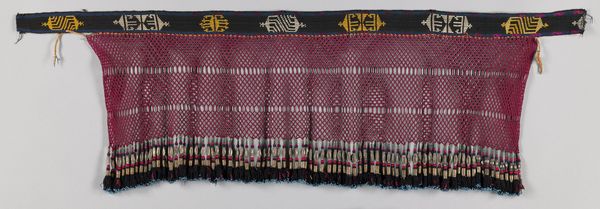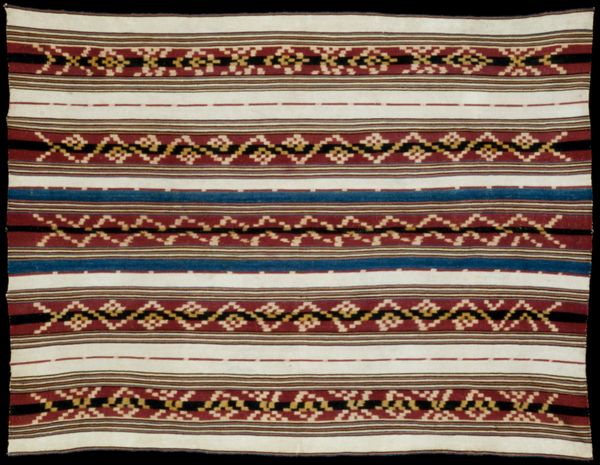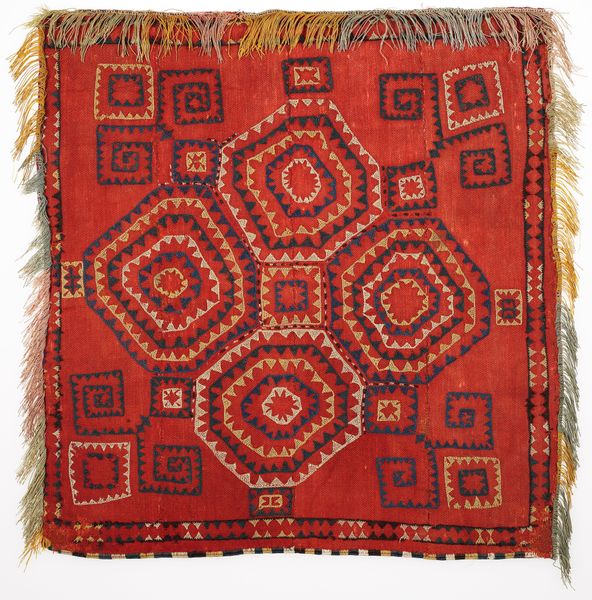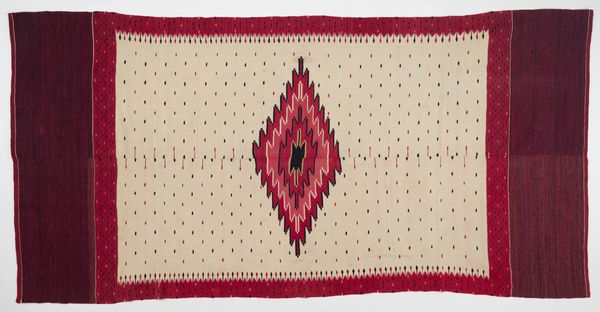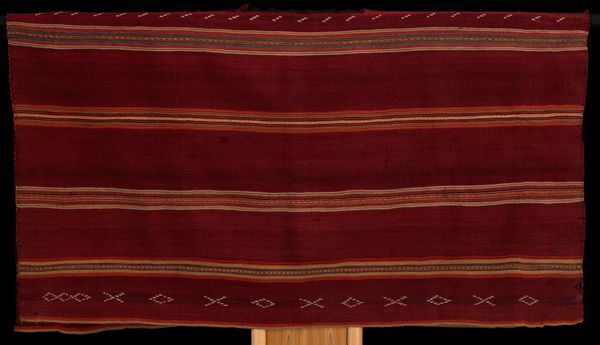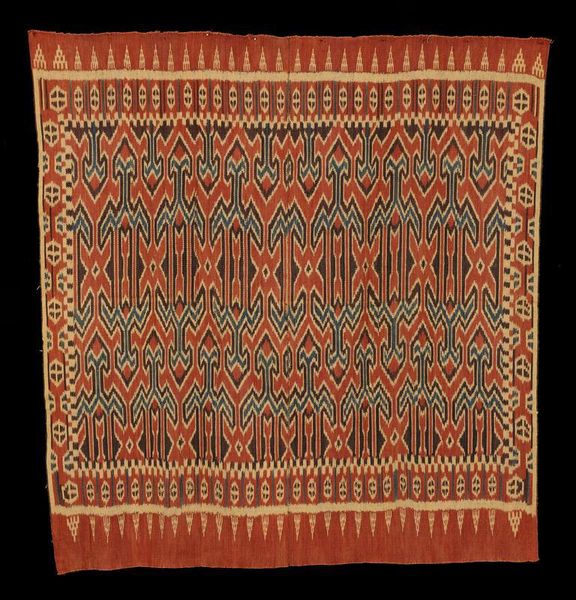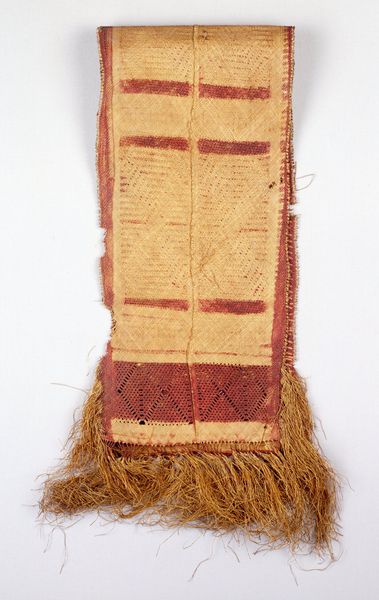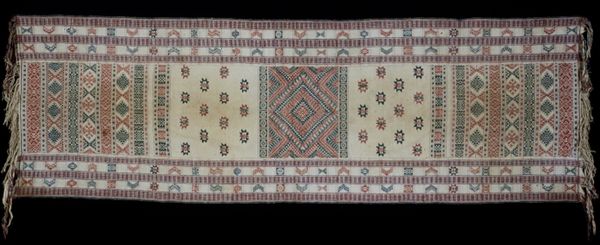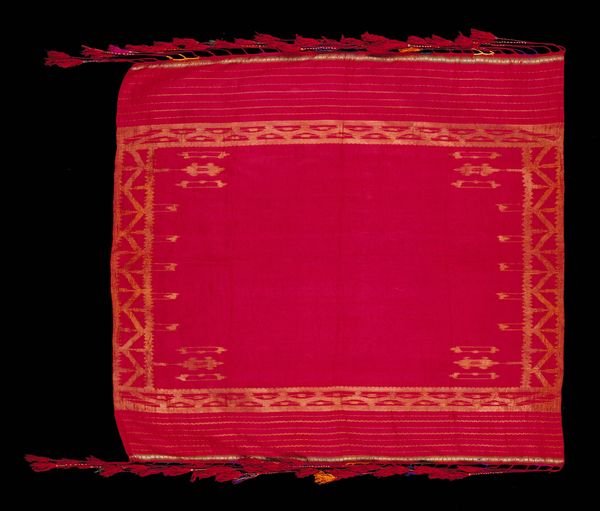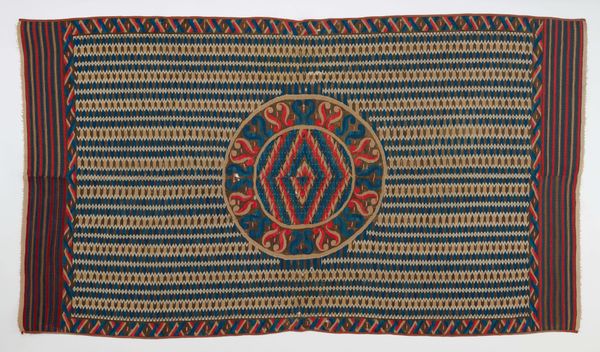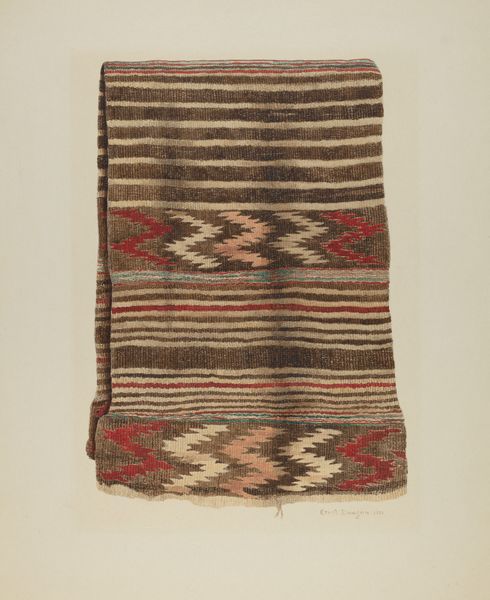
fibre-art, weaving, textile, cotton
#
fibre-art
#
weaving
#
textile
#
geometric
#
cotton
#
indigenous-americas
Dimensions: 34.2 × 39.3 cm (13 1/2 × 15 1/2 in.)
Copyright: Public Domain
Curator: This is a weaving, titled "Border Fragment," made by the Chancay people, possibly between 1000 and 1476. It's currently housed at The Art Institute of Chicago. Editor: It's a fascinating textile! The geometric patterns feel almost contemporary, but the age and clear signs of wear give it a tangible connection to the past. How do you read a piece like this? Curator: For me, this textile screams materiality. Look at the weaving technique itself – each thread carefully placed, creating those striking geometric forms. This wasn't just decoration; it was labor, skill, and a deep understanding of the materials at hand. Editor: Right, I'm seeing it... How might the materials have been sourced and valued during that time? Curator: Exactly! We need to consider the raw materials - likely cotton and perhaps camelid fibers, their cultivation or acquisition, and the processes of spinning, dyeing (notice the faded reds?), and weaving. These processes were integral to the society. This wasn't 'art for art's sake'; it was part of the economic and social fabric. The fringe too -- look at how dense and textural it is. Do you think it was merely decorative? Editor: Hmm, not merely. Perhaps it had a practical purpose, or even signified status? Curator: Precisely! Think about who had access to such textiles, and the skill needed to produce them. Was this for everyday use, ritual purposes, or trade? The fragment invites us to ponder the system of production and consumption it existed within. Editor: That reframes my thinking entirely. I was focusing on the design, but now I see it as evidence of labor, resource management, and social hierarchies. Curator: That’s it exactly! Every choice of material, every knot and weave tells a story about the people who made it and the world they inhabited. Editor: Thank you. I appreciate the fresh perspective on understanding the cultural relevance based on materiality and methods of making. Curator: My pleasure! I hope it made you see how much "text" is woven into a "textile" like this.
Comments
No comments
Be the first to comment and join the conversation on the ultimate creative platform.
